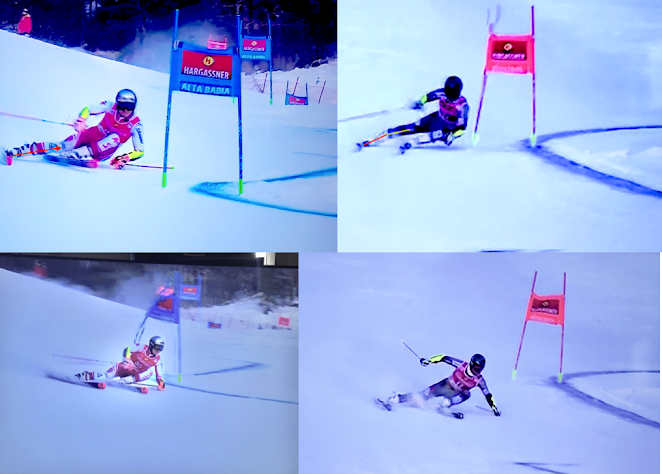On the left is a newcomer to the top 5 in a World Cup GS race at Alta Badia. On the right is a veteran racer who has numerous top 5 results in his career but is now struggling. These comparison photos are two different turns, but the point isn't about the turn it's the leg to boot angles and the consequences. The times for the run support the result from what happened on all the turns where the racer on the right showed a lack of edge angle and ski edge holding ability.
The top right photo shows the difference in ski and boot angle to the surface. There is a definite lack of boot angle compared to the leg and knee angle with the skier on the left. The consequences are shown in the lower right comparisons. Although this is a one-turn example, this occurred numerous times in the difficult offset turns in both runs. These two racers are on different boot companies.
The photo below shows a new racer who put up an excellent performance with a good result, on the same boot company as the racer at the top right. Some racers obviously fit the manufacturer's
boot angles better than others, or the techs did a better job setting up the boots for the skier in the lower photo.
For the course set in Alta Badia, a racer needed to achieve an angle like the one above to make the ski perform well. Notice how the medial angle of the ski boot in this photo is touching the snow and the ski is at almost 90 degrees to the surface. This angle is much more in line with the top photo on the left which creates a turn that holds well and accelerates the racer down the slope.


No comments:
Post a Comment